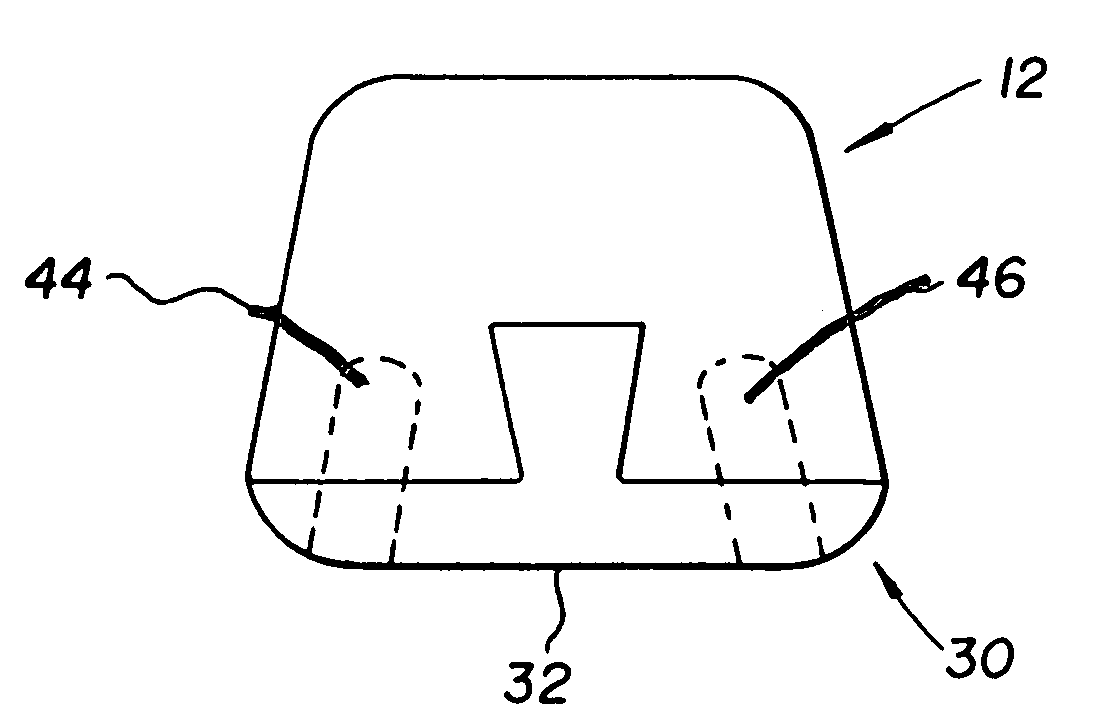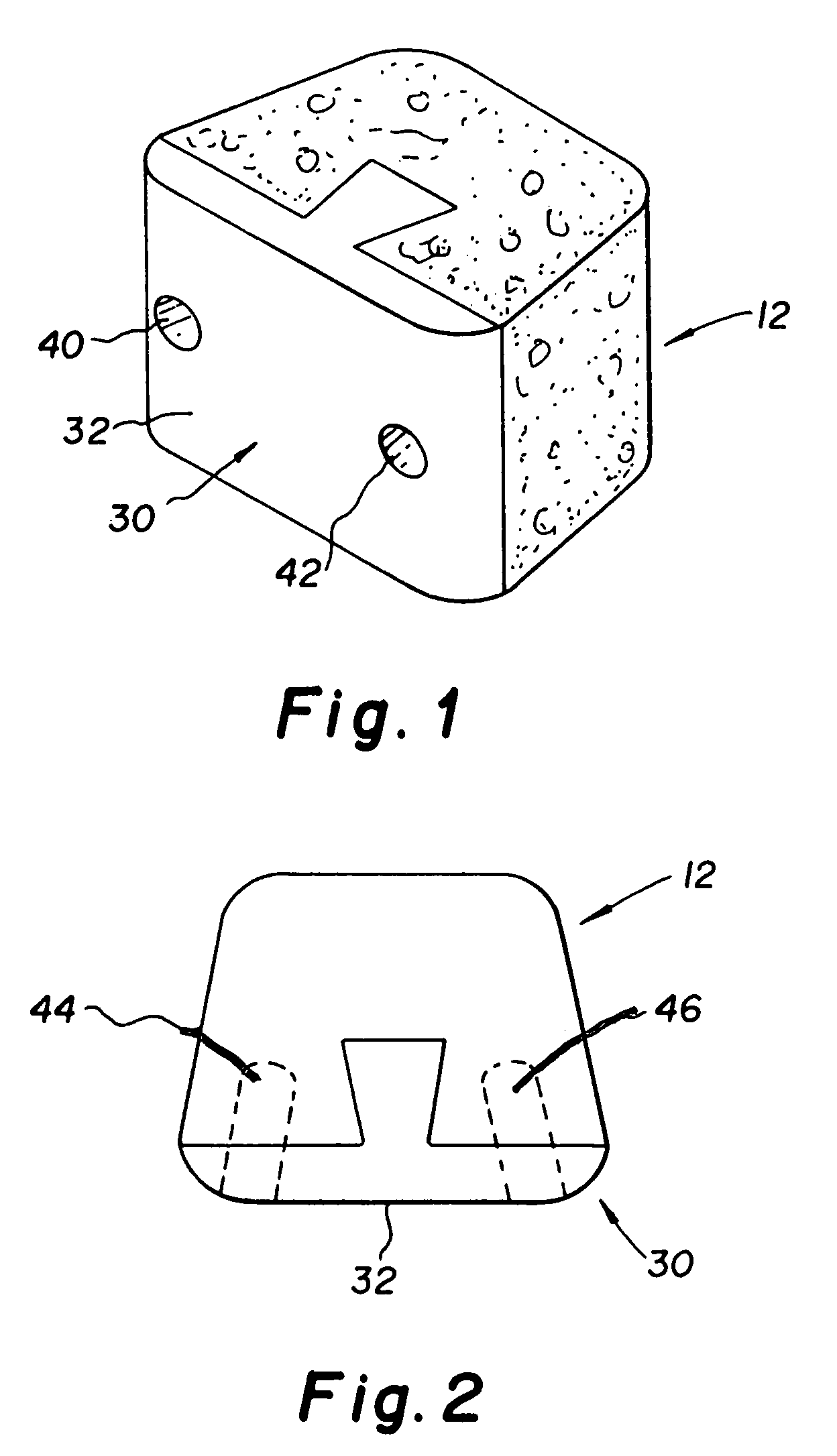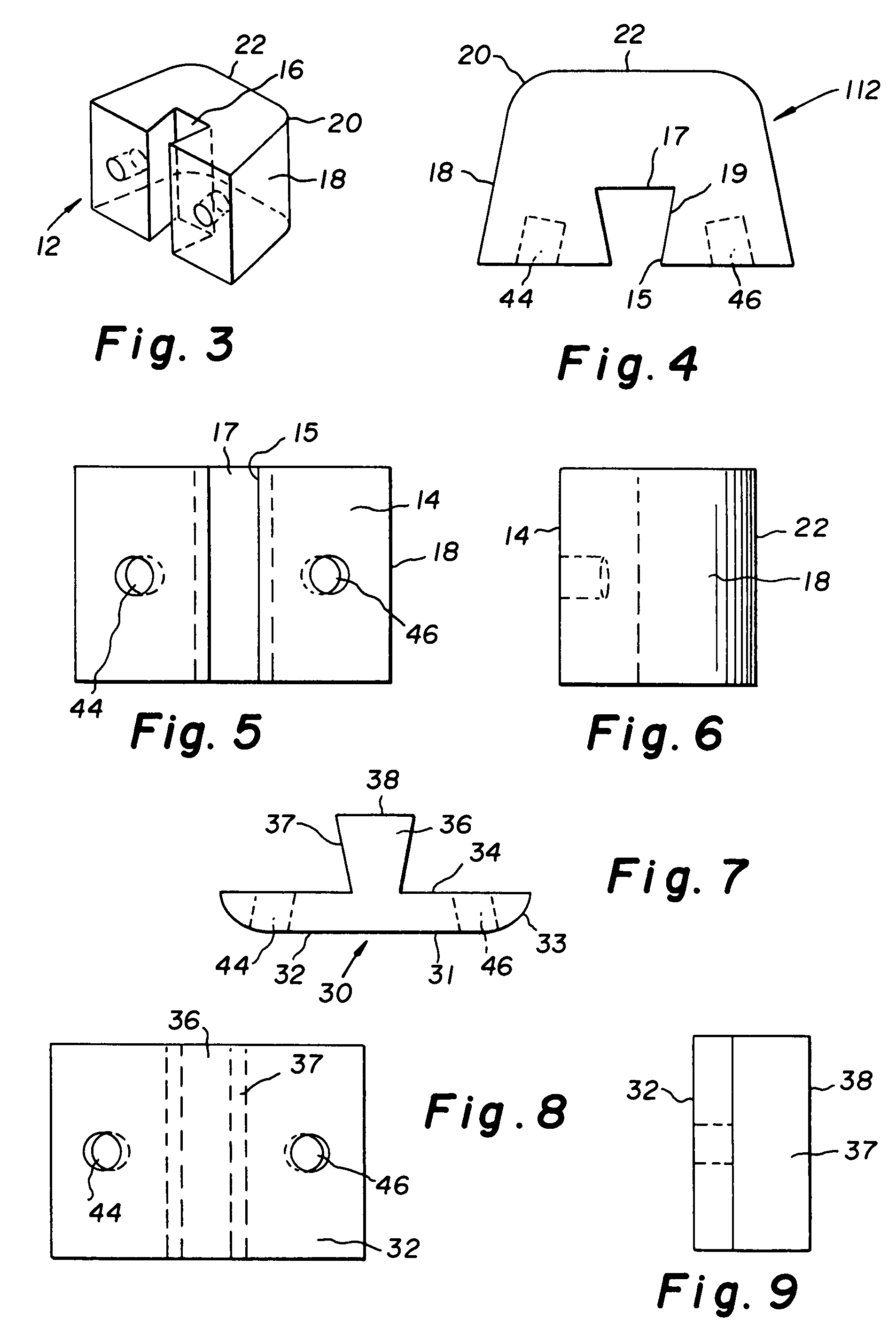Cortical and cancellous allograft cervical fusion block
a cervical fusion block and allograft technology, applied in the field of surgical implants, can solve the problems of abnormal force applied to the cervical vertebra, bone material erosion, bone material erosion, etc., and achieve the effects of accelerating the healing process, ensuring the overall strength and durability of the structure, and effectively promoting new bone growth
- Summary
- Abstract
- Description
- Claims
- Application Information
AI Technical Summary
Benefits of technology
Problems solved by technology
Method used
Image
Examples
Embodiment Construction
[0058]The preferred embodiment and best mode of the present invention is shown in FIGS. 1 through 9. The composite bone implant block 10 is shown in FIG. 1 in accordance with the present invention.
[0059]The composite cortical cancellous bone block body or intervertebral spacer 10 is preferably constructed with a first component member 12 of denser cancellous bone taken from donors age 45 or less cut into a truncated triangle shape. This component accounts for a large portion of the graft and provides a large area for bone fusion to occur. The component member body has a flat planar front end surface 14 and is provided with a dove tail shaped recess 16 cut therein into the interior of the cancellous component body. The dove tail shaped recess 16 extends from the access port or opening 15 to the base wall 17 forming the rear of the recess. The access entrance opening 15 is preferably about twice as wide as the base 17 of the recess and the side walls 19 of the recess are angled from 7...
PUM
 Login to View More
Login to View More Abstract
Description
Claims
Application Information
 Login to View More
Login to View More - R&D
- Intellectual Property
- Life Sciences
- Materials
- Tech Scout
- Unparalleled Data Quality
- Higher Quality Content
- 60% Fewer Hallucinations
Browse by: Latest US Patents, China's latest patents, Technical Efficacy Thesaurus, Application Domain, Technology Topic, Popular Technical Reports.
© 2025 PatSnap. All rights reserved.Legal|Privacy policy|Modern Slavery Act Transparency Statement|Sitemap|About US| Contact US: help@patsnap.com



